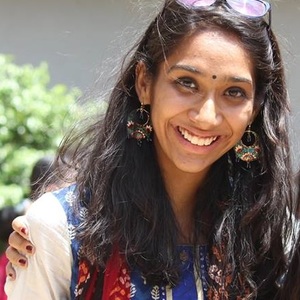Being the capital of the country, Delhi offers an amalgamation of all cultures, traditions and religions. People from across the country make Delhi their home, with them comes their culture and the various food practices.
What could be better than exploring the food offerings or Prasads of their places of worships? The Prasads are simple and being sacred they are made with utmost discipline and devotion making them magically tastier. Here is a list of some of the most delicious prasads:
1. Boondi and Kachori- Sabzi of The Pracheen Hanuman Mandir, CP

Photo Courtes of www.rajbhog.com
It is said that this temple is one of the five temples built during the time of the Mahabharata. One of the most chaotic places in Delhi, the line for its darshan is literally a few kilometers long!
The Prasad offered in this temple is the popular Boondi. The shops outside the temple, have hills of these tiny yellow and orange sweet balls. Freshly made in front of you, dipped in the sweetest of sugar syrups, it is difficult to not drool when you stand in the line to await the darshan on a busy day.
Another delicacy which is quite popular, though not often offered as a Prasad is the Kachori-sabzi. It is extremely cheap, delicious and fulfilling. There are many kachori-walas outside the temple, do try them once, with the steaming hot aloo-ki-sabzi.
2. Karah Prasad and Langar at the Bangla Sahib Gurudwara, CP

Photo by Simran
One of the most peaceful places in this city is indeed the Bangla Sahib Gurudwara. With the positive aura, beautiful architecture and the serene Saravor, you can spend the entire day here and get your mind to balance again.
Immediately after your darshan, you are served the Karah Prasad which is made with whole wheat flour, ghee and sugar. It is hot, and the overflowing ghee escapes from between your fingers, so basically, you end up licking your hand.
The Sikhs pray ‘Loh langar tapde rahin’ which means may the hot plates of the langars remain ever in service. And honestly, you will pray the same too after eating the langar at Bangla Sahib.
The classic menu of a langar is extremely simple and light, hot fresh chapattis, lightly spiced basmati rice, a dal with a beautiful tadka ,a spicy potato dish and kadi pakora.
3. Venn-Pongal at Ram Mandir, Lodhi Road

Photo Courtesy of ytimg.com
Let’s travel to south India now? The Ram Mandir is a South Indian Temple, an organ of Vedic Culture Centre. On any one day of the week, you do get to eat the venn pongal but the most delicious servings of the Prasad is in the Dhanor masam (in December) where every chilly morning you get a serving of the hot venn pongal in dried palm leaf.
Venn pongal is a south Indian form of khichdi, made of moong dal and rice spiced with pepper and cumin seeds, it is cooked in Ghee (or venna) and a handful of cashew nuts for a few crunch sounds in a every bite. In the foggy winter mornings, when you eat this prasadam which is drowned in venna, after the powerful Vedic chanting as the first few rays of the sun fall on you, it is heavenly, pure bliss.
Apart from this, every day you get to eat a south India delicacy as prasadam, if you want to experience the south Indian Vedic and temple culture, the Ram Mandir and the Mallai mandir, R K Puram are two of the best options in Delhi.
4. Prasadams at Uttara Swami Mallai Mandir, R K Puram

Photo Courtesy of lekhafoods.com
Dedicated to Lord Murugan, this temple boasts of a unique architecture, where no cement and mortar have been used to construct the shrine. You will get to eat a different prasadam everyday in this mandir. Some of the most famous dishes here are Pulihora or tamarid rice which is a typically Andhra dish, Rava Kesari which is a sweet dish which essentially is halwa cooked with Kesari or saffron, daddojanam or curd rice spiced with chillies, black pepper, mustard seeds and curry leaves and bisi belle bath which literally means hot lentil rice, it is a very spicy dish of Karnataka.
So when are you going out and trying all of these? Because it’s not only about the food here, but the beautiful and diverse culture and history associated with these places.


